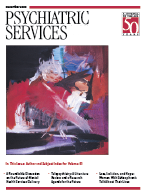These two volumes, the seventh and eighth in a series on empirical studies of psychoanalytic theories, take on the important task of reviewing empirical research about the psychoanalytic unconscious and about events within the psychoanalytic hour. Assembled by the same editors, the books have similarities in approach and some overlap of contents, so it is entirely appropriate to consider them as a pair.
Readers unfamiliar with this series and these editors may have justifiable concerns about efforts to bridge the gap between empirical research and psychoanalytic theory. They might expect to encounter a series of instances in which empirical studies have found results "consistent with" some aspect of traditional psychoanalytic theory, followed by assertions that the entire psychoanalytic theoretical system has thereby been sustained and that any obligations by clinicians to produce validation are thereby fulfilled. Or they might expect detailed attention to minutiae, with no hope for clinical relevance.
To avoid these pitfalls, authors—and editors—would have to demonstrate both an appreciation of the clinical situation and a capacity to apply scientific principles rigorously and critically. On the whole the editors of these volumes, and most of their contributors, have met these tests very well.
In Empirical Perspectives on the Psychoanalytic Unconscious, the strongest contribution is Drew Westen's chapter on unconscious thought, feeling, and motivation. Westen provides a sophisticated, clearly thought-out review of the basic issues, followed by an impressively wide-ranging description of many relevant studies. Here the reader will encounter useful discussions of everything from conditioning studies to lesion studies to the use of galvanic skin response, evoked related brain potentials, and functional brain imaging. It is gratifying to learn that research of this diversity and in such quantity is under way and to find someone like Westen who is capable of understanding and reviewing it.
Other chapters in this volume take different approaches. In general, each is based on a single line of research. Some seem rather speculative, and some seem to rely heavily on traditional assumptions.
Empirical Studies of the Therapeutic Hour has a superb introduction. Here the editors take the psychoanalytic movement to task for many antiscientific habits—most notably, denying independent access to the primary data and retaining theoretical tenets that are arguably tautological, sexist, operationally undefinable, and untested while ignoring empirical findings. Despite their frankness and their clear commitment to scientific methods and critical thinking, the editors never cause the reader to doubt that they are fascinated by the phenomena that psychoanalysts address and that they believe that progress can be made.
The strongest chapter in this volume is the first: "Negative Process: Its Impact on Research, Training, and Practice" by Hans Strupp. It is a comprehensive review of an extremely important clinical issue, and it includes a concise description of a research program that has spanned 25 years. The destructive significance of negative responses from the therapist, even when subtle and seemingly minor, is firmly established here. In addition, the difficulties involved in training therapists not to respond negatively are well demonstrated.
The group behind this research carefully designed and implemented a series of increasingly sophisticated and thoughtful training programs to attempt to change the clinical behavior of therapists who generated negative responses. When they studied training outcomes, they repeatedly found no improvements. As an educator, I found this research to be completely credible. If these investigators ever claim positive training results, the whole field should pay immediate attention.
Another fine contribution is Hartvig Dahl's chapter reviewing research on FRAMES—fundamental repetitive and maladaptive emotion structures. His concluding remarks are especially timely, frank, and poignant. He describes an array of problems. For instance, the generation of researchers trained through National Institute of Mental Health fellowships is approaching retirement. Psychoanalysis itself supports much less research effort than is needed. "There is little cooperation among the dozen or so groups doing this kind of research. All are trying to push their own procedures and theories. . . . And this chapter is another such example." This honest conclusion reflects the view that many readers will have after reading these volumes.
To some extent these researchers do cite each other's work. Occasionally they even use each other's instruments and methods. These are positive trends, especially compared with the state of affairs 20 or 30 years ago. On the other hand, a comparison with clinical research in other fields would show that much more progress can be made.
I found the most appealing feature of these two volumes to be the editors' freedom from illusions. Nowhere do they express any expectation that the research they review will change clinical practice, or even be noticed in any way by clinicians. Nevertheless, anyone involved in psychotherapy will find these volumes stimulating, rewarding, and useful. They should be required reading for many trainees, especially candidates at psychoanalytic institutes. Like the volume editors, I make this recommendation wholeheartedly, but without any expectation that it will be heeded.

